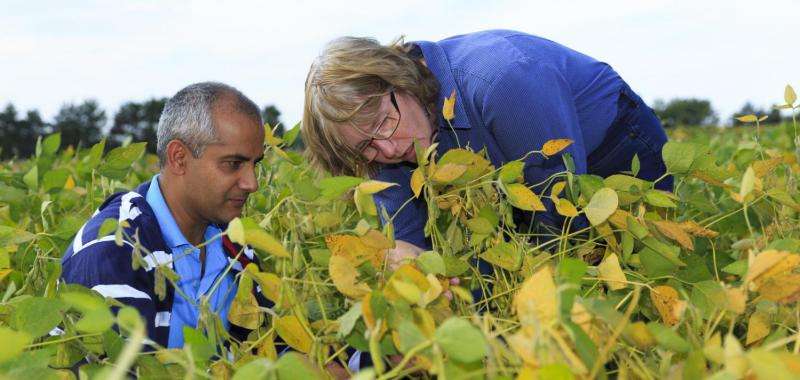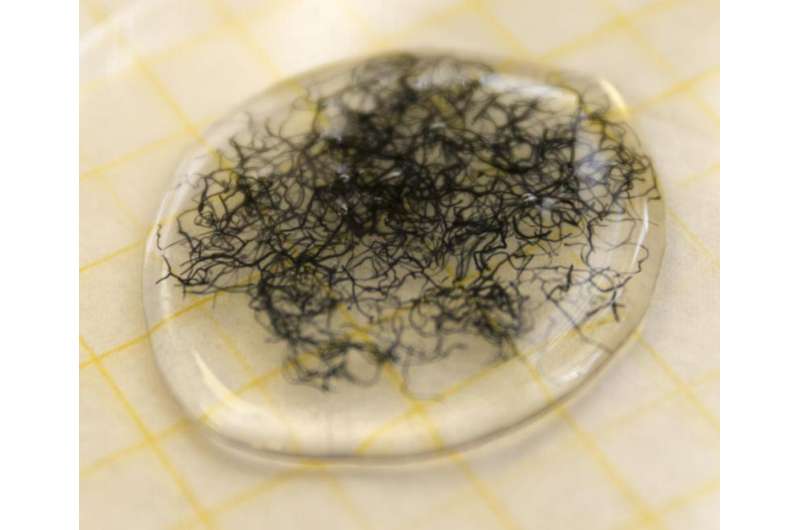Microbiologists unravel relationship among plants, mycorrhizal fungi

An ancient, mutually beneficial relationship between plants and fungi could make agriculture more sustainable by reducing the need for chemical fertilizers, according to professor Heike Bücking of the South Dakota State University Department of Biology and Microbiology.
For more than 500 million years, the majority of land plants have shared their carbohydrates with arbuscular mycorrhizal fungi that colonize their root systems, Bücking explained. In exchange, these fungi provide plants with nitrogen and phosphorous and improve the stress resistance of their hosts.
These fungi, which are seen as living fossils, explore the soil with their hyphae in the search for nutrients and deliver these nutrients to their hosts. As reward, the host plant transfers anywhere from 4 to 20 percent of its photosynthetically fixed carbon to these mycorrhizal symbionts.
"We think these fungi have the potential to increase the biomass production of bioenergy crops and the yield of food crops and do so in a more sustainable and environmentally friendly way," said Bücking. She studies these interactions in food and bioenergy crops including wheat, corn, soybeans, alfalfa, clover and perennial grasses, such as prairie cordgrass.
Her research has been supported by the National Science Foundation, South Dakota Wheat Commission, Sun Grant Initiative, Soybean Research and Promotion Council and the U.S. Department of Energy - Joint Genome Initiative.

Defining plant-fungi relationships
Supply and demand determine the amount of nutrients that plants and fungi exchange in these mutualistic relationships, according to Bücking. To unravel these complex interactions, she collaborates with researchers at the Vrije Universiteit in Amsterdam and the University of British Columbia as well as other South Dakota Agricultural Experiment Station researchers.
Though a host plant is colonized by multiple fungi species simultaneously, the plant is able to distinguish between good and bad fungal behavior and allocates resources accordingly," she said. These fungi cannot be enslaved by one particular host plant and form common mycorrhizal networks that give them access to multiple hosts.
Her research, for example, showed that when fungi were able to choose between a shaded and a non-shaded host plant, fungi responded by reducing their nutrient share to the shaded plant because this host plant was not able to provide as much carbon as the non-shaded plant.
Interestingly, it has recently been shown that plants use these common mycorrhizal networks also as information highways, and are able to "communicate" and to exchange warning signals from one plant to another.
Optimizing fungi for specific crops
She and her collaborators have also found that some fungi are more beneficial than others. For example, Bücking and her collaborators evaluated the relationship between alfalfa and 31 different isolates of 10 arbuscular mycorrhizal fungal species.
They then classified the fungal isolates as high-, medium- or low-performance isolates. The researchers found that high-performance isolates increased the biomass and nutrient uptake of alfalfa by more than 170 percent, while the low-performance ones did not have any effect on growth.
However, those that benefit one crop may not provide the same nutrients or benefits to another crop species, she cautioned. "Even different isolates of one fungal species can behave differently, and it will be necessary to identify fungi that are optimally adapted to their specific environment and host plant to get the highest plant benefit.
Adapting to stressors
In addition to providing nutrients, these fungi can protect food and bioenergy crops from environmental stresses, such as drought, salinity and heavy metals, and diseases, Bücking explained. "All the stresses that a plant can potentially be exposed to are generally improved by mycorrhizal interactions."
Increasing tolerance through conventional breeding generally targets only one specific stress factor, but crops are often subjected to multiple stresses simultaneously, she pointed out. "These fungi, if used efficiently, can provide the plant with an improved resistance against stresses that are often difficult for us to predict."
However, she added, more research is necessary to better understand how this ancient symbiosis between land plants and fungi can be used to its full potential.
Provided by South Dakota State University




















